[The Basics of “Webtoon” Translation]
1.
Reader-friendly translation (Localization)
•
Please translate all texts in the image, even outside the speech bubbles (ie. store signs, placards, sound effects/onomatopoeia, etc.)
•
Please avoid literal translations to make the content fun to read. A moderate level of transcreation and contractions are couraged.
•
Webtoons are consumed via scrolling and/or swiping, so syntax and readability are paramount.
•
You do not need to conform to the original syntax and/or sentence structure, but the text must sense with the image.
2.
Text Box
•
One “text box” is formed per unit of text in speech bubbles, narration boxes, sound effect/onomatopoeia, etc.
Example:
•
Sometimes, the system does not recognize the text properly and thus fails to form text boxes properly.
When more than one text box is formed per unit as above, please delete the extra text box(es) and leave just one. Or if the text box isn’t formed as above, please “add text box.”
(Refer to Totus Editor Guide: https://voithru.notion.site/NEW-totus-Editor-Guidelines-for-Translators-Test-3c2d478abd6a4c9183b8fdb959756ee3)
3.
Sound Effects/Onomatopoeia
•
Please use the most commons sound effects and onomatopoeias.
◦
Sound effects/Onomatopoeia Collection: https://docs.google.com/spreadsheets/d/1C2zlhqOIG24hjRB_SpHBM5Ny5g4BukVn3VH8nlH8SB4/edit#gid=1697983132
▪
The above collection is for Korean-to-English translations and is only meant to be used as a reference. Please use the most appropriate sound effect/onomatopoeia needed.
•
Please use one word for your sound effect/onomatopoeia.
Example: LEAN (O) LEAN IN (X) RELEASE (O) LET GO (X)
•
The goal is to use “sound words,” but if the action you are trying to portray cannot be expressed in sound words, use appropriate action verbs/adjectives. When you use action verbs, use the root form of the verbs. [Verbs are preferred over adjectives.]
Example: JUMP (O) JUMPING (X) JUMPS (X)
•
Please recognize and keep the sound effects/onomatopoeia as one word even if gaps exist in the original material.
Example: 씨 익 → GR IN (X) GRIN(O)
•
Please translate all sounds effects/onomatopoeia, when they are describing repetitive action.
•
Exception
◦
For mature content, you may omit punctuation for sound effects/onomatopoeia if that is the only thing in the speech bubble.
4.
Consider the typesetting process when you translate
Process of localizing “webtoons”: Translation → Typesetting
What is typesetting? Typesetting is a process where your translated work is designed onto the images using photoshop.
•
In the typesetting process, your translation is essentially copied and pasted so you must consider the length and shape of your translated text so that they’ll fit right in the speech bubbles, narratives boxes, etc.
Example:
※The translated text on the right is too long and isn’t in the right shape.※
•
Typesetting is not done by the translator! So any important elements that the typesetter or translation checker should take note of must be mentioned in the Memo section.
◦
Check “번역 To-do” when you leave a memo for your translation checker
◦
Check “식자 To-do” when you leave a memo for your typesetter
◦
You may also check both if need be
Example:
5.
Line-break
•
Always have your translated text in a diamond/round shape.
•
Only use the “enter key” to change lines and DO NOT add unnecessary spaces.
◦
The editor is set up with a center alignment by default. Adding unnecessary spaces will mess up the alignment in the end.
※ It is difficult to tell where your line breaks are by looking at the translation section alone, so always decide by referring to your purple text box. ※
For example, if you see below,
← The alignment and shape of the translated text may not look problematic in the translation section.
← but if you stretchout the purple text box horizontally, you can see that there are no line breaks and the translated text is in one single line.
** Text Alignment Rule **
Please always make sure that the top and bottom lines are the shortest and the middle lines are the longest.
•
Please avoid changing lines immediately after the article (a/an/the).
Bad example:
Good example:
5.
Other things to keep in mind
•
Your translation should be in ALLCAPS (upper case).
•
However, all texts in the background image such as text messages, letters, web pages(text on screens), documents, handwritings, etc. should be in mixed case (both upper and lower cases).
[Style Guide]
1.
Language
•
Always use standard American English.
◦
Please do not use British English.
•
Please void using words or expressions from specific dialects or regions.
◦
(When necessary) Dialects and region-specific language can be used depending on the work. (Consult your PM/LG)
•
Please avoid using neologisms (unless it is requested to be used in specific materials).
◦
Please avoid using internet abbreviations like LOL, WTF, etc. (When necessary to be used, consult your PM/LG).
•
Curse words and profanity may only be used in mature content.
◦
For regular content, censor with asterisks (*) or refined words.
2.
Punctuation
•
Please punctuate all sentences.
※ All sentences much be punctuated even if punctuation does not exist in the original material.※
•
However, sound effects/onomatopoeia that are outside the speech bubbles are exempt from this rule. Remove punctuation marks (except for !, ?, ?! for effect) even if punctuation exists in the original material.
Example: (The ellipsis is removed for “HM” that is outside of the speech bubble.)
•
The rule of thumb is to not follow the punctuation in the original material, because it is highly unlikely that punctuation would make sense in the target language. Always use the most natural punctuation for your target language.
•
If the speech bubble has only ellipsis or dots, use three dots (…) only.
•
Punctuation marks that can (or cannot) be used
Please learn the table below to see which marks can be used and which cannot be used.
Default view
Search
3.
Speech bubbles/Narration boxes
•
When a sentence continues over two separate speech bubbles (or narrative boxes), use the ellipses at the end of the first bubble and at the beginning of the next bubble, so that the readers can know that the two bubbles are connected. (Commas will not be used connect them.)
Example:
Sentence → “Not only is it common for the original in the real world to die before the copy, his and my time are also finite.”
•
When a sentence continues over connected speech bubbles, end the first bubble with an ellipsis and omit the ellipsis in the beginning of the next bubble. (Commas are not used to connect the sentence.)
Example:
Sentence → “I’m a sort of clone that the deceased made by copying his brain on to digital space when he was alive.”
3.
Glossary and Story Notes
•
Translators are asked to fill in story notes for every new series to ensure uniformity and consistency.
◦
Story notes/glossary may not exist for special cases such as sample works, tests, etc.
◦
Translators are expected to keep the story notes up to date as the series progresses. (Please notify your PM every time you update the story note, and leave in the Memo section for the Linguist(translation checker))
•
Names of people/places, proper nouns, manner of speech, character info, etc. must all be included in the story notes.
◦
(Above example is merely a point of reference and fake. And it is for Korean-to-English translation. The format of each story note may differ depending on the series or client.)
▪
Your translation must follow the names of people/places/form of address/proper nouns indicated in the glossary/story notes.
▪
Word spacing must also be uniform.
▪
Using casual tones/honorifics should be done with discretion. (A difference in tone should be considered and should be used consistently througout your work.)
▪
Please consult your PM/LG for expressions, words, etc. that are not in the story notes.
•
Proper Nouns
◦
Names of People
▪
For Korean names, the rule of thumb is to romanize—Romanization Rule (Please localize the names so that the first name come first, and the last name comes after.)
Example: 장한나 → Hanna Jang
▪
For Korean last names, use the most widely accepted spelling.
Example: 김 → Gim (X) Kim (O) 노 → No (X) Noh (O)
▪
When it is difficult to pronounce the names or if the meaning of the names change after romanizing, you may hyphenate or tweak the spelling.
Example: 강혜나 → Hyena Gang (X) Haena Kang (O) 이허일 → Heoil Lee → Heo-il Lee
◦
Names of Places
▪
Please use proper English translations for regions and districts.
Example: 도 → Do (X) Province (O) 구 → Gu (X) District (O)
군 → Gun (X) County (O)
▪
When real places of names are used and the names are vital to the story, you may use the official English names of those places.
•
However, the rule of thumb is to use made-up names.
◦
Brand, Product Names, Names of Famous People
▪
The rule of thumb is to slightly change names that actually exist. (When necessary to be used for the story, please consult your PM/LG.)
Example: Burger King (X) Burger Queen (O) Gucci (X) Kucci (O)
•
Age
◦
The age of the characters should be localized.
“내 나이 19세, 시들시들한 고3이다.”
→ “I’m 18 years old, withering away as a high school senior.”
4.
Avoid using footnotes
•
In considering readability, use footnotes only when it is necessary to keep the elements of the original work.
◦
How to use footnotes:
1. Place an asterisk (*) behind the word you’re footnoting.
2. Add a new text box below and add your footnote. (*Word: Footnote)
5.
Numerals
•
Please spell out numbers one to nine, and use digits for numbers 10 and above.
•
Use digits for dates, time (am, pm), age, and money.
•
Phone numbers
◦
Localize the format of the phone number and mix digits with Xs.
(Example, for Korean cell phone number: 010-1234-XXXX)
•
Localize currency. (1,000KRW=1USD)
◦
Please do not use “KRW” or “USD” (dollars, $ can be used).
◦
There may be exceptiosn to this rule depending on the series.
6.
Date and Time
•
For time/place placements to indicate when and where the scene is taking place, no punctuation (period) is needed.
← “오늘 날 도쿄”
•
When a specific year is mentioned, or if the year is masked with Xs—if the webtoon was published long ago, mark the year as 20XX instead of, for example, 2017 (but only if the date does not affect the story).
•
The rule of thumb is to follow the 12h-system and not the 24h-system for indicating time. (am, pm)
Example: 13:50 → 1:50 pm
7.
Speech
•
Please use a hyphen (-) to indicate stuttering.
•
Please use a hyphen (-) to indicate a sudden cut off/interruption in the middle of speech/dialogue.
•
Please use the ellipsis (…) to indicate a fade-out.
8.
Possessives
•
Please use ‘s if a singular noun ends with an “s” to indicate the possessive.
[All] Final Check
Check for mistakes through a final inspection. Submitting works without correcting mistakes will reflect poorly on your translation and result in a deduction in the evaluation process.
Makes sure to check for common mistakes!
•
Grammar
•
Spelling
•
Typos
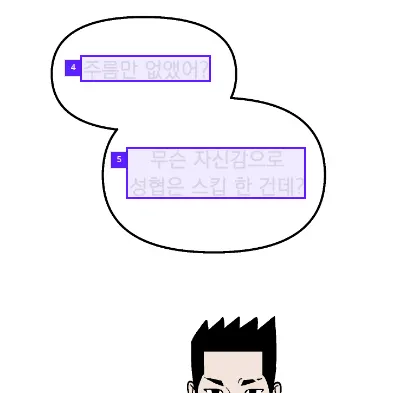
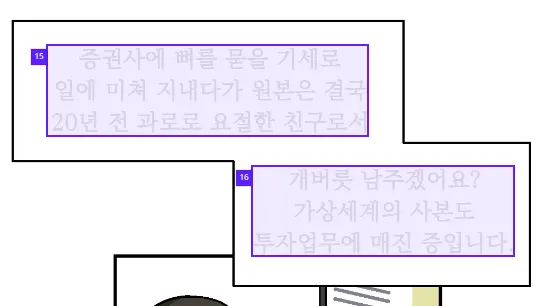
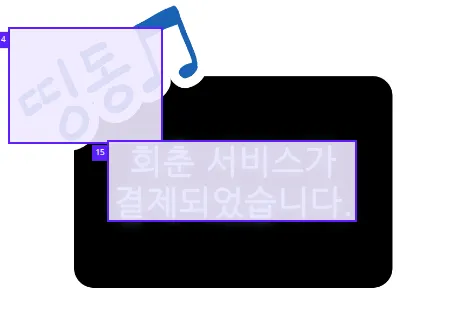
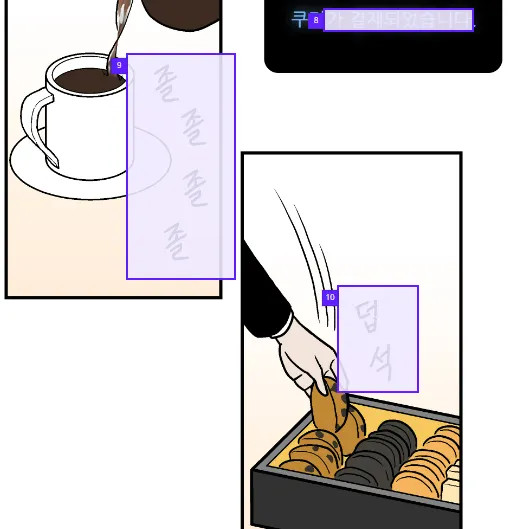
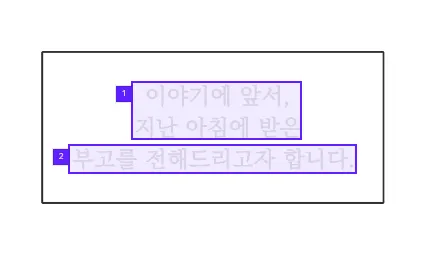
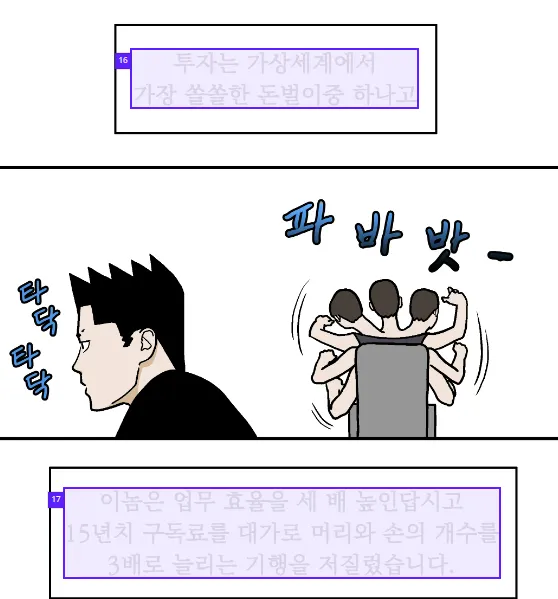
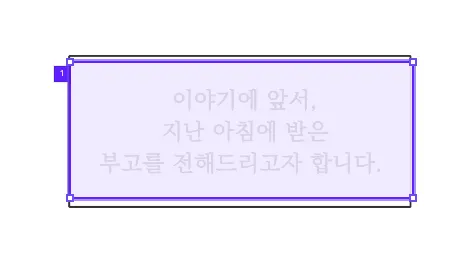
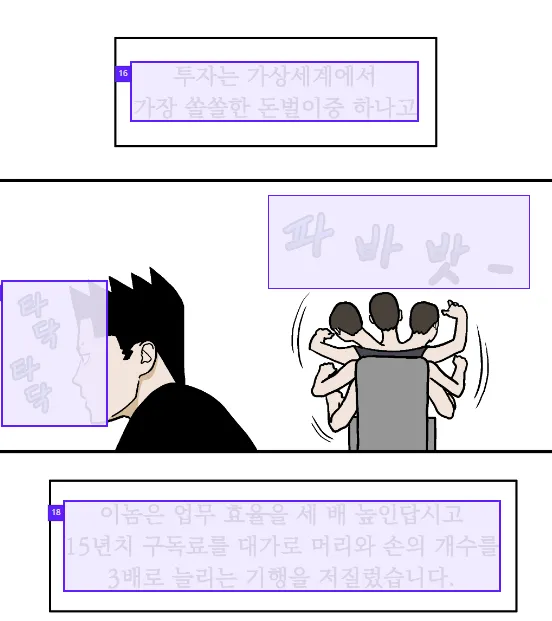

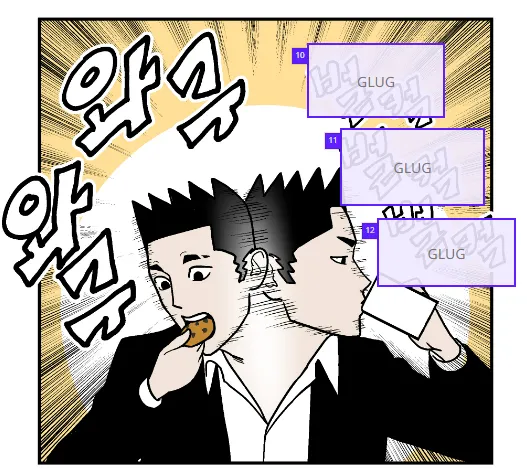
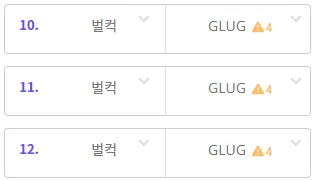

.png&blockId=f1853662-fa9f-4e19-8725-7df0e5423a09)
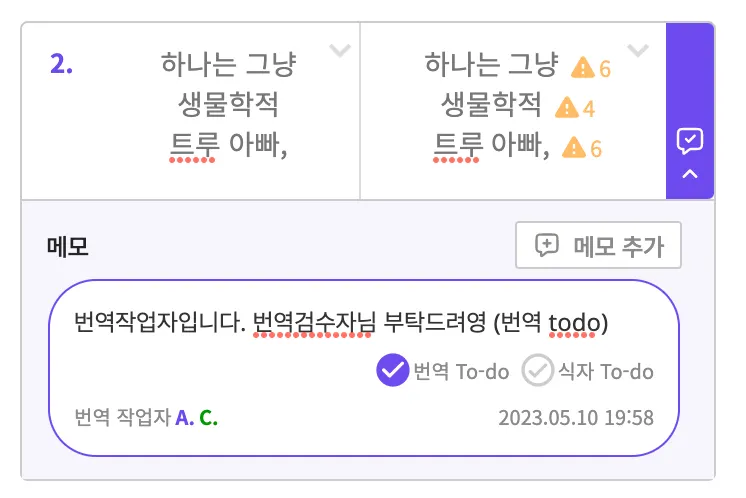
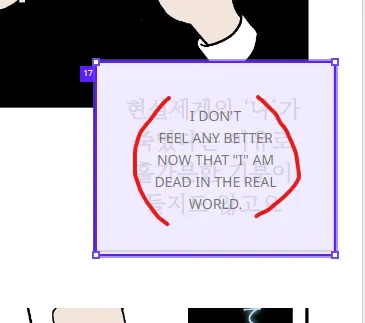
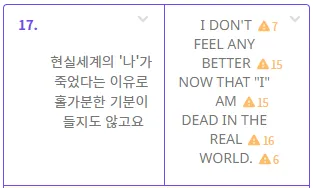
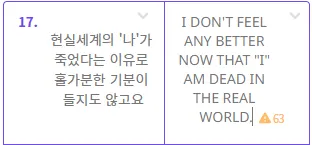
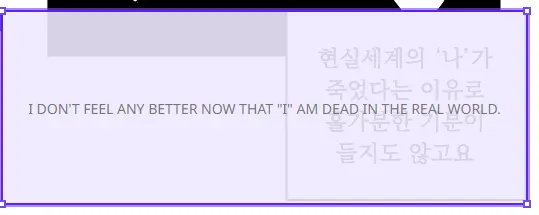
.png&blockId=26312bb4-a4a6-4000-a723-2ca7cdb01af3)
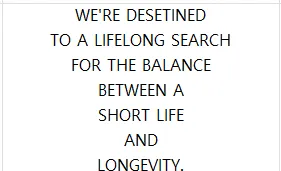
.png&blockId=fddfd4dc-88e1-4771-8925-79337f5dc84e)
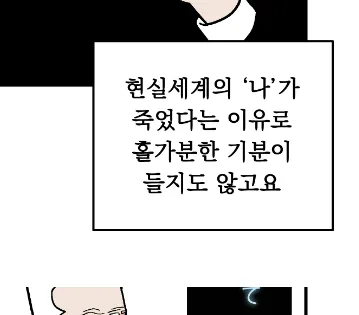
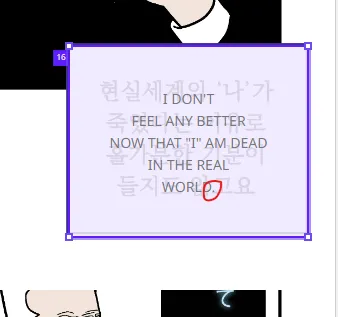



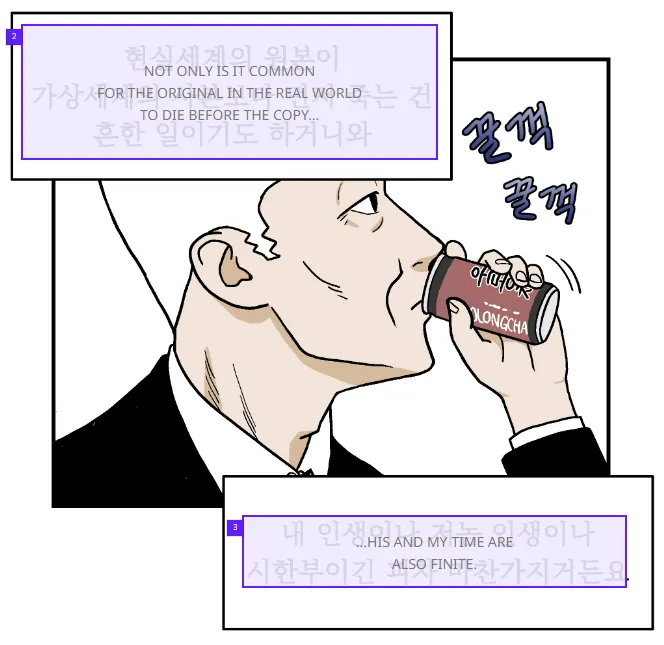
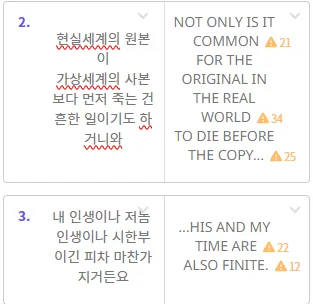
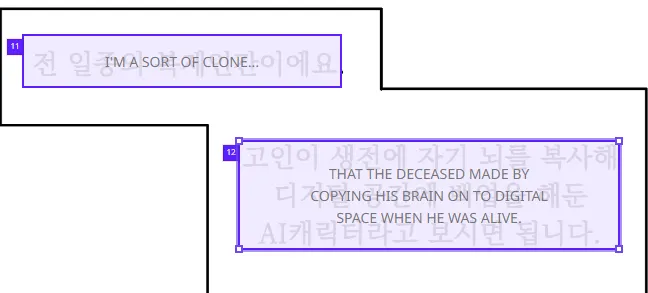
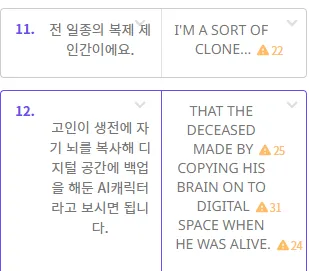
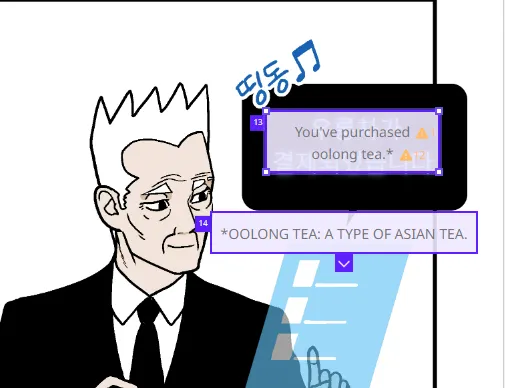
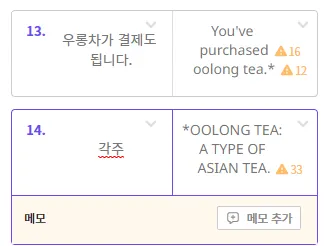

.png&blockId=ce1017b7-70e8-4338-b260-d1c2e203b160)
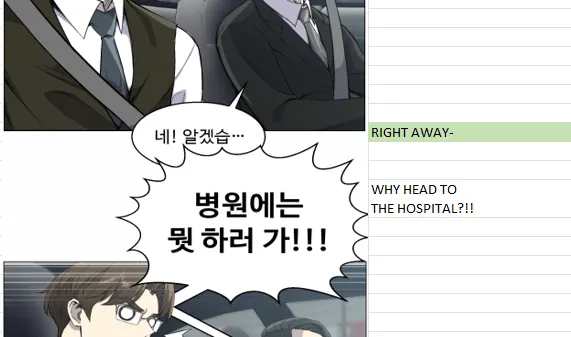
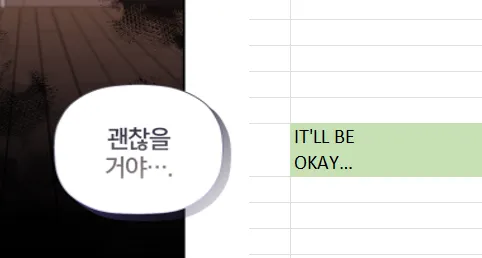
.png&blockId=aee09bf9-9c7f-42d4-b25d-898e20dff50e)